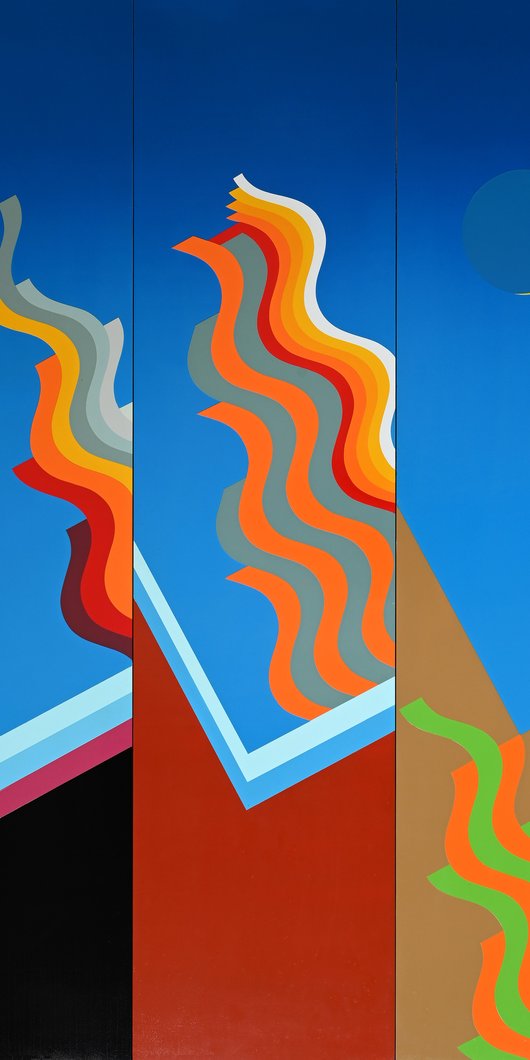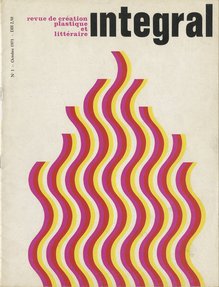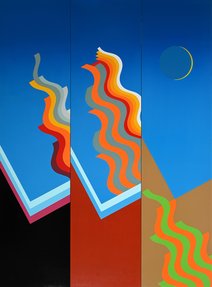In 1964, after several years honing his craft in Madrid, Rome, Paris and New York, the painter, designer and cultural activist Mohamed Melehi returned to his home country of Morocco, where he joined the faculty of the Casablanca Art School. As an artist and a teacher, he committed himself to reinforcing the national culture in the context of Morocco’s recent independence from France.
In his own words, Melehi drew attention to the differences in the dynamic views of a Western artist and those of an Arab artist: ‘Notre art propose plutôt une contemplation qu’une réalité congelée. Notre art qui apparaît statique et synthétique est un art transcendantal, de la mobilité et de la vibration’1. ('Our art proposes more of a contemplation than a concrete reality. Our art that appears static and synthetic is transcendental, it is of mobility and vibration.')
Melehi abandoned the Western styles that he had adopted early in his career to explore the richness of Arab-Islamic artistic heritage. He eventually created a unique oeuvre, in which the motif of the wave would become his famous signature.
The artist first illustrated a wave in 1971 for the cover of Francophone magazine Intégral. A symbol of the cosmic connection between the sun, the horizon and the sea, Melehi’s iconic wave is always designed like a flame, although the dynamic treatment evolved over time, especially in the artist’s series of paintings in the 1980s, including Blue Moon (1984).


